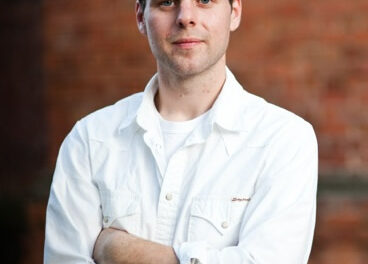The first concert of the Rice Toyota Sitkovetsky & Friends Chamber Series presented Dmitry Sitkovetsky, Music Director of the Greensboro Symphony, in a role that Triad audiences do not often get to hear: as soloist in a recital setting. Although Sitkovetsky is known internationally as a violin virtuoso, playing both in chamber settings as well as with orchestras, he seldom plays in North Carolina as soloist (the exception being, of course, when he performs concertos with the GSO). UNCG faculty member Inara Zandmane was the spectacular pianist who accompanied the violinist throughout the evening.
A decent-sized crowd turned out to take advantage of this event in the UNCG School of Music, Theatre and Dance Recital Hall. The opening number was not on the program; rather, Sitkovetsky had arranged one of Mendelssohn’s piano works from his Songs without Words for violin and piano. The arrangement was a gift for Garson Rice, who underwrites the entire chamber series. The mesmerizing performance included double and triples stops for the violin.
The program proper began with the last of Beethoven’s ten sonatas for violin and piano, Op. 96, in G Major, written in 1812. This is a large work, in four movements (only three of Beethoven’s violin sonatas are laid out in this way). Sitkovetsky claimed that the sonata “is unmatched by any in the literature.”
The first movement gently opens with trills from the violin which initiate a conversation with the piano. The material is shared equally by both piano and violin, and Zandmane and Sitkovetsky came to the fore when either had the main material. The piano introduces the main melody in the Adagio, although after the violin enters, it takes the spotlight for most of the gorgeous movement. The Scherzo abruptly interrupts the meditation with a sprightly minor tune; one could have asked for a bit more edge here. The folk-like finale is a set of variations with several twists including a reference to the slow movement, a fugal passage, and a fast coda.
The playing throughout was first-rate. Sitkovetsky can change the timbre and character of his sound instantly, revealing wonderful and subtle melodic inflections. Zandmane was a perfect partner, now supporting the violin, now leading.
Next up were two works by violin virtuoso Fritz Kreisler (1875-1962): “Liebesleid” (“Love’s pain”) and “Liebesfreud” (“Love’s joy”). Both are clearly designed to spotlight the violin – the first a somewhat melancholic tune in triple time, the second a virtuosic showpiece featuring a catchy tune with abundant double-stops. Sitkovetsky suitably strutted his stuff.
Siete Canciones Populares Españolas (Seven Popular Spanish Songs) by Manuel de Falla (1876-1946) were written for voice and piano, and in this arrangement, the violin takes the vocal line adding some embellishment. The songs, imbued with Spanish folk flavor, wander from moods of nostalgia, through intimate, private expression, to wild dancing. The arrangement of six of the seven is a wonderful glimpse into the Spanish soul, and both Sitkovetsky and Zandmane played with delicacy, passion, and abandonment, depending on the demands of the score.
The final pieces in the printed program provided the title for the evening’s concert “Noble & Sentimental”: Ravel’s Valses nobles et sentimentales (arranged by Heifetz). The duo performed two of the eight, without pause between them, so that the audience was unsure that the piece was finished (Sitkovesky said “That’s it!”). The waltzes were a little fractured, a little nostalgic. The playing was sophisticated and chic.
A “Kreisler” work provided the encore: “Rondino on a Theme by Beethoven.” Sitkovetsky explained that this piece was not by Beethoven but that Kreisler had actually composed it. Kreisler had tired of having his name associated with every piece he played, so he claimed that he found newly-discovered manuscripts in the south of France, including the Rondino. Be that as it may, the piece provided a light-hearted, quasi-classical conclusion to a great evening of music.
This chamber and recital series continues on November 8, in the same venue. For details, click here.











